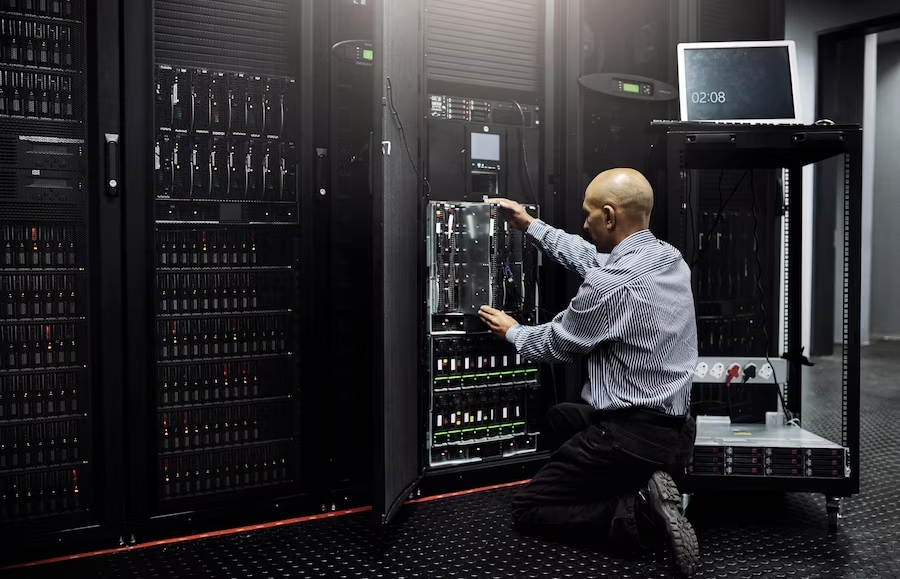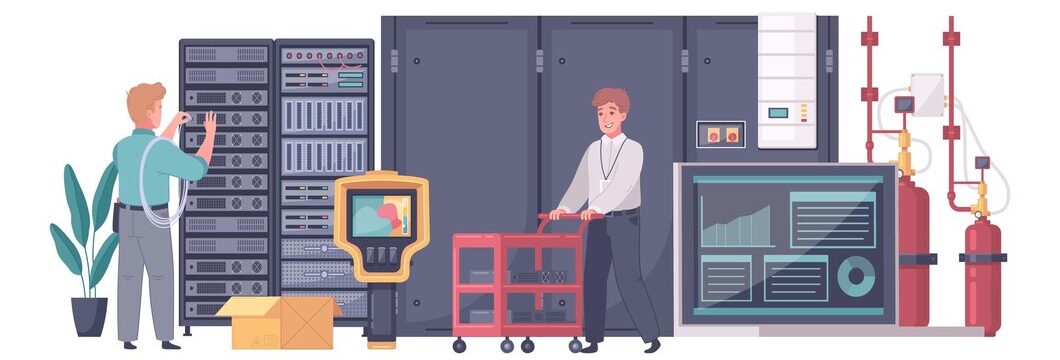Key Considerations for Data Cabling Infrastructure Design and Installation
The foundation of a reliable IT network lies in a robust structured cabling design. It is crucial to invest the necessary time and resources into creating a well-designed cabling system that aligns with your organisation’s specific requirements and objectives. With this in mind, a variety of factors need to be considered, such as the operational location, bandwidth needs, code compliance, indoor aesthetics, and more.
Neglecting the planning, design, and maintenance of your cabling infrastructure can hinder the scalability of your business and operations. Without a solid foundation, it becomes challenging to expand or adapt your network infrastructure to accommodate future growth or changing demands.
By prioritizing proper planning and design, you ensure that your structured cabling system can support the current and future needs of your organization. This includes considerations such as the selection of appropriate cabling components, efficient routing, scalability options, and adherence to industry standards.
Regular maintenance and upgrades are essential to keep your cabling system functioning optimally. As technology advances and your business evolves, periodic assessments and modifications to your structured cabling design can help enhance performance, reliability, and security.
Investing in a well-designed and properly maintained cabling infrastructure sets the stage for a scalable and efficient IT network, empowering your organisation to adapt, grow, and remain competitive in the ever-changing digital landscape.
What is Data Cabling Infrastructure?
Data cabling infrastructure refers to the physical network of cables, connectors, and related hardware that supports the transmission of data within a business or organisation. It encompasses the wiring system that allows for the reliable and efficient transfer of digital information, including voice, video, and data signals, between various devices and network components.
In a business setting, data cabling infrastructure serves as the backbone of the organisation’s IT network. It connects computers, servers, switches, routers, telecommunication equipment, and other devices to facilitate communication and data transfer.
Below, we take a closer look at the key components of data cabling infrastructure:
- Cables: Physical wires that carry the data signals. Common types of cables used in data cabling infrastructure include twisted-pair copper cables (such as Category 5e or Category 6), fibre optic cables, and coaxial cables.
- Connectors and Jacks: Used to terminate the cables and provide the connection points for devices. Examples include RJ-45 connectors for Ethernet cables and SC or LC connectors for fiber optic cables.
- Patch Panels: Provide a central location for terminating and organising the cables, allowing for easy connectivity and management.
- Racks and Cabinets: Used to house and organize the network equipment, patch panels, and other components in a neat and secure manner.
- Network Switches and Routers: Enable the distribution and routing of data packets across the network.
An efficiently designed and professionally installed data cabling infrastructure ensures reliable data transmission, high-speed connectivity, and optimal network performance within a business. A well-implemented data cabling infrastructure supports various applications and services, including internet access, internal communications, file sharing, cloud services, and other network-dependent operations.
Investing in a well-planned and well-maintained data cabling infrastructure is essential for businesses to support their day-to-day operations, facilitate effective communication, enable seamless collaboration, and adapt to the evolving technological landscape.
What to consider when implementing data cabling infrastructure design and installation
When it comes to data cabling infrastructure design and installation for businesses, several factors need to be considered.
Below, we take a look at the key considerations:
- Bandwidth and future requirements: Assess the current and future bandwidth requirements of your business. Consider factors like the number of devices, data-intensive applications, and anticipated growth. Ensure that the cabling infrastructure can accommodate increasing demands.
- Consider scalability: Plan for scalability by choosing a cabling system that can easily expand or adapt to future needs. This includes selecting cabling components and infrastructure that support higher speeds and larger capacities.
- Consider cable types: Select the appropriate cable types based on your specific needs. This could include twisted-pair copper cables (e.g., Cat 5e, Cat 6), fibre optic cables (single-mode or multimode), or a combination of both. Consider factors like distance, bandwidth requirements, and electromagnetic interference.
- Implement cable management: Proper cable management is essential for organisation, maintenance, and future troubleshooting. Implement cable management solutions like racks, cabinets, cable trays, and labels to ensure a tidy and accessible cabling infrastructure.
- Compliance and standards: Ensure that the data cabling design and installation comply with industry standards, regulations, and local codes. This includes fire codes, safety guidelines, and performance standards.
- Testing and certification: Perform comprehensive testing and certification of the installed cabling infrastructure to validate performance and adherence to standards. This ensures a reliable and high-performing network.
In order to effectively achieve a well-designed and professionally installed data cabling infrastructure, it is highly recommended to work with a professional data cabling company. A professional data cabling company has the expertise, experience, and resources to handle the complexities of cabling design and installation.
How we can help
With over 25 years of expertise in data cabling installation, the ACCL team possesses a wealth of knowledge and experience. Our extensive background enables us to complete projects with precision and adhere to our client’s exacting standards. Over the years, we have refined our work process, ensuring that every client benefits from optimal performance while minimizing their investment.
Our team of skilled data cabling installers is well-equipped to assist your organization in achieving its structured cabling goals, regardless of the size or type of installation project. Year after year, we have successfully delivered over 230 office cabling projects, showcasing our ability to handle diverse and demanding assignments.
We understand the importance of reliable and efficient data cabling, and our mission is to provide exceptional service that meets and exceeds our client’s expectations. By choosing ACCL, you can rely on our experienced team, proven track record, and dedication to delivering high-quality results.
Let us leverage our extensive expertise and industry-leading practices to design and install a data-cabling infrastructure that precisely meets your organization’s needs.



















